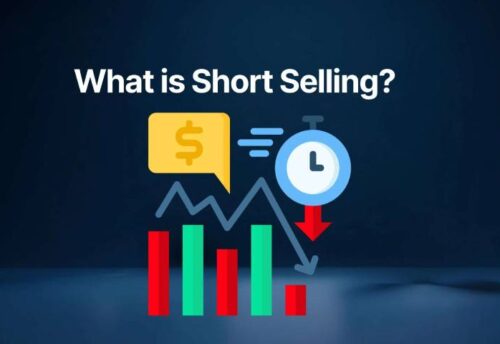
- 11/11/2025
- MyFinanceGyan
- 127 Views
- 0 Likes
- Share Market
What Is a Put Option? — Meaning, Uses, and Benefits
In options trading, a Put Option acts as financial protection — a way to profit when prices fall or to insure existing holdings.
Understanding how put options work helps investors hedge risks and capitalize on bearish trends without short-selling.
Definition:
A Put Option gives its holder the right, but not the obligation, to sell an underlying asset (like a stock or index) at a set strike price within a specific period.
- The buyer pays a premium for this right.
- The seller must buy the asset if the option is exercised.
How It Works ?— Example
Stock XYZ trades at ₹1,000.
You buy a put option with:
- Strike = ₹950
- Premium = ₹20
If price falls to ₹900 →
Profit = ₹950 – ₹900 – ₹20 = ₹30 per share.
If price stays above ₹950 → Option expires worthless; loss = ₹20 premium.
Why Investors Use Put Options?
- Hedging: Protect portfolios from downside risk.
- Speculation: Profit from falling prices.
- Income: Earn premiums by selling puts.
Buyer vs. Seller Comparison:
Types of Put Options:
- American: Exercisable anytime before expiry.
- European: Exercisable only on expiry date.
- Protective Put: Buy put to hedge portfolio.
- Naked Put: Sell put without holding stock — high risk.
Pricing Factors:
- Intrinsic Value: Strike – Market Price (if positive).
- Time Value: Higher with longer expiry.
- Volatility: Increases premium.
- Interest Rates & Dividends: Influence pricing marginally.
Advantages:
- Limited loss (premium only)
- Profit from declining prices
- Powerful hedging tool
- Requires less capital than short selling
Risks:
- Premium loss if price doesn’t drop.
- Time decay reduces value near expiry.
- Sellers face large losses if prices crash.
Conclusion:
A put option offers a cost-effective way to manage downside risk or profit in falling markets. With limited loss and flexible applications, it’s a key tool in modern portfolio management — balancing risk and reward efficiently.
Disclaimer: The content above is intended solely for educational and informational purposes. It does not constitute financial advice or a recommendation to invest in any specific IPO.



